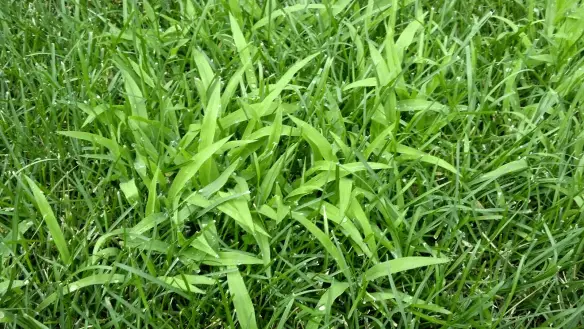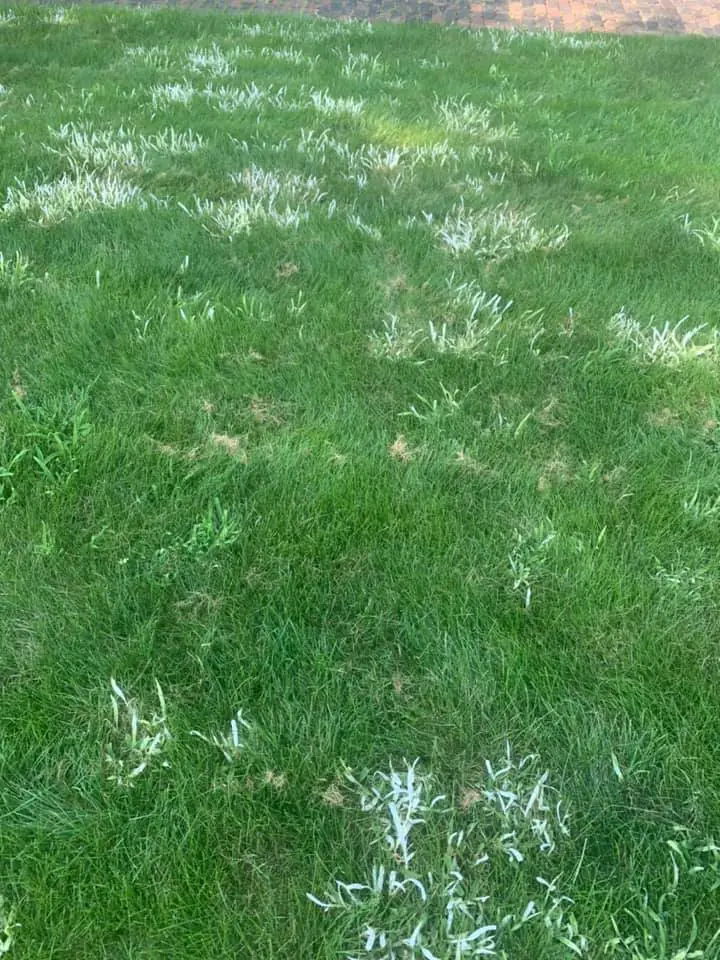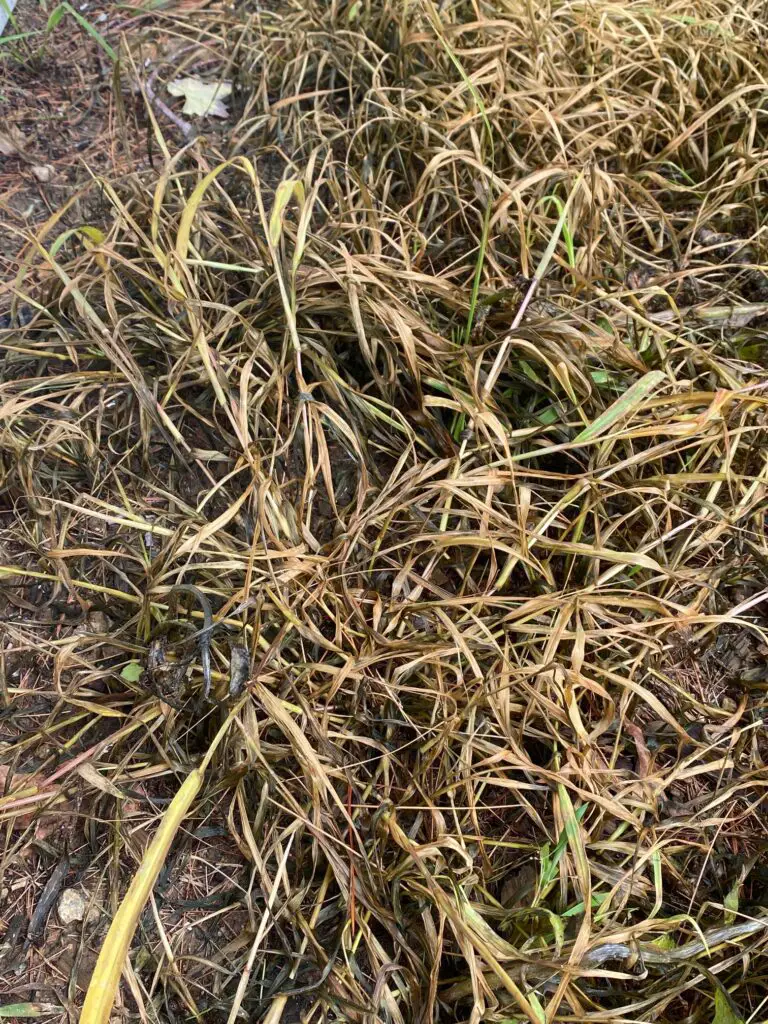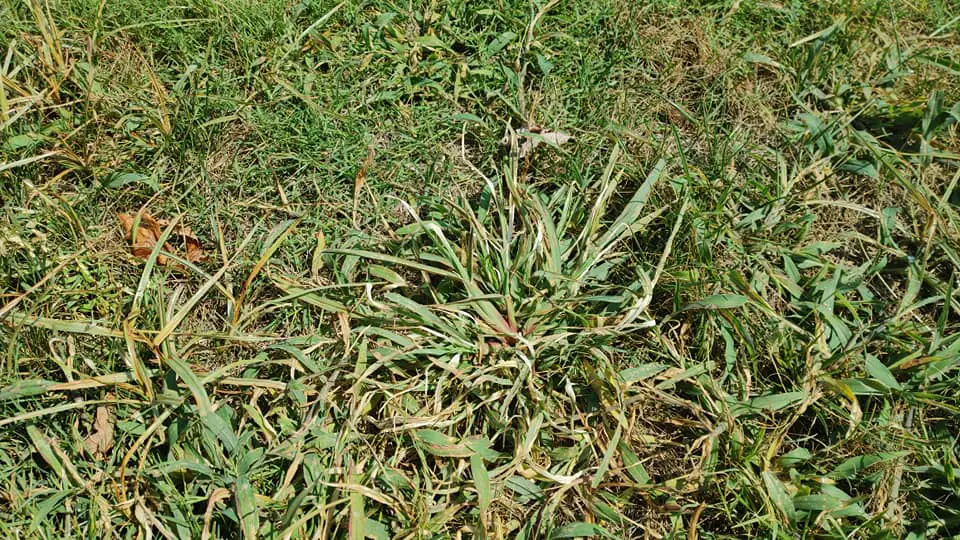LAWN PHIX PRO TIPS
Crabgrass is one weed where application timing is paramount. This annual grassy weed germinates in the spring when temperatures reach 55 degrees for three consecutive days and thrives in the hot summer. Here are the three things you must do to have a crabgrass-free lawn all season. It’s the exact method I use on my property and all of my 40+ customers.
- In the early spring (first week of April) evenly apply a Prodiamine pre-emergent. Choose one of the following:
- 0-0-7 with 0.37% granular: 5 lbs. per 1,000 sq. ft.
- 18-0-3 wtih 0.38% granular: 4-5 lbs. per 1,000 sq. ft.
- Barricade 4FL: 0.5 oz. per 1,000 sq. ft.
- In the late spring (approximately six weeks after the first application), apply another pre-emergent evenly, containing Dithopyrn (Dimension).
- Dimension 2EW: 0.5 oz. per 1,000 sq. ft.
- 21-0-10 with 0.25% Dimension: 3-4 lbs. per 1,000 sq. ft.
- Pay attention to the “hot spots” along the driveway, sidewalks, and curb lines, as these sections will likely be the first to show crabgrass breakthroughs.
- To kill crabgrass post-emergently, use Drive XLR8 at 1.45 oz. per gallon with a non-ionic surfactant. The active ingredient is Quinclorac.
Table of Contents
Crabgrass is among the most stubborn of all lawn weeds, as it can come back with a vengeance year after year if the lawn isn’t treated properly.
Known for its “crab-like” appearance (i.e., growth close to the ground with a central stem and blades resembling the crustacean legs), crabgrass seeds tend to germinate in the spring months, unbeknownst to many property owners. Then, during the summer months, when the days become hot and dry, crabgrass plants can really grow to take over what appears to be an otherwise healthy lawn.
Crabgrass will eventually die in the fall months when temperatures don’t favor its growth any longer, but often not before laying down plenty of weed seeds that are likely to restart the infestation all over again in the spring.
If you know what to do, preventing crabgrass from overtaking your lawn is pretty straightforward. In this post, we’ll take a closer look at how to identify, prevent, and kill the crabgrass plant.
What is the lifecycle of Crabgrass?
Crabgrass seeds are shed from the plant every year towards the end of summer to early fall. These hearty seeds lay dormant in the soil over winter and begin to germinate when the soil temperatures reach optimal conditions in the springtime. This is usually when the soil temps are consistently 55 degrees Fahrenheit or warmer for five consecutive days. In Massachusetts, this is usually in early April.
Identifying Crabgrass in Lawn Grass
While some may dismiss it as nothing more than a strange grass clump, crabgrass is a weed that resembles a crab. It’s characterized by a stem in the middle of the weed and blades emanating from it resembling crab legs.
Crabgrass thrives in dry, hot weather – so it tends to appear in lawn grasses in the mid to late summer months. Because of how crabgrass seed spreads, usually, there’s always more than just a single crabgrass plant.
The way crabgrass seedlings spread and germinate and its designation as an annual weed underscore the importance of properly treating crabgrass to prevent it from overtaking cool-season grasses year after year.



How To Kill Crabgrass
How do you get rid of crabgrass without damaging your lawn? Prevention is key, and we’ll get into various pre-emergent herbicides and other crabgrass preventers in the next section. But there are a few ways to eliminate existing crabgrass sprouts without doing damage to your lawn. Here’s a look:
- Spot treatment: Use a good selective post-emergent herbicide or crabgrass killer herbicide for spot treatment on your lawn. I recommend products with the active ingredient quinclorac – like Drive XLR8 – to kill crabgrass. Fenoxaprop-p-ethyl (Acclaim Extra) is the next best option, particularly for larger, more mature crabgrass. And Mesotrione (Tenacity herbicide) will work, but takes multiple applications and is not as effective as the other two chemicals.
- Pick it out: If it’s young crabgrass, you should be able to discard it from your lawn. If the plant is too mature, however, this method of crabgrass control isn’t likely to be effective. Mature crabgrass plants can sprinkle seeds onto your lawn as you’re removing them.
- Best crabgrass killers: Quinclorac and Acclaim Extra
- You can also find some decent, ready-to-use products to kill crabgrass in big box stores and hardware stores. But these two products in particular will begin to show visible effects in as little as 48 hours.
How To Prevent and Control Crabgrass
Prevention is key to preventing and controlling crabgrass and keeping a healthy grass lawn. Here’s the best way how to do it:
- Tend to your lawn in the early spring and know when to apply crabgrass preventer: Before soil temperatures become favorable and crabgrass seeds germinate (55 degrees Fahrenheit), it’s most important to act. Apply the appropriate lawn fertilizer with crabgrass preventers (Step 1 of a 4-step lawn care program), a pre-emergent herbicide, or corn gluten meal to control crabgrass naturally. Such products will work to discourage crabgrass before the weed growth has a chance to thrive. If you don’t, your crabgrass problem will only be worse next year.
- Pro tip: I always follow up with a second pre-emergent application in the early to mid-summer. This will be your best bet for a weed-free lawn all growing season.
- Feed your lawn regularly: One of the keys to preventing crabgrass growth is to grow healthy grass. A healthy thick lawn won’t just help prevent crabgrass from growing, but other grassy weeds as well. Make sure to fertilize accordingly and apply new grass seed to fill in any bare spots on your lawn every fall, especially any thin and bare spots where crabgrass actively grew.
- Mow properly: Crabgrass weeds thrive when growing low to the ground, and taller grass blades can become a key prevention strategy. for best results, make sure to mow at a higher height. This can help shade the soil below it and help with weed control. It can also be worth it to leave grass clippings on the lawn rather than bag them.
- Aerate your lawn: Compacted soil supports crabgrass growth (not to mention growth of other weeds). Regularly having your lawn aerated can help loosen up soil, help your lawn develop deeper roots and prevent crabgrass growth.
- Best crabgrass preventer: Prodiamine or Dithiopyr. For simple 4 step plans, Scott’s Step 1 is a great option in preventing crabgrass and other weeds.
Crabgrass FAQs
When do I apply a crabgrass preventer?
It’s always better to prevent crabgrass than to administer crabgrass killers to control it after its seeds germinate in the summer months. Prevention is best carried out during the early spring months to ensure crabgrass stays away and desirable grass flourishes – before soil temps reach 55 degrees.
What is another (generic) name for Prodiamine?
Barricade by The Andersons uses Prodiamine and is often used synonymously.
What is another (generic) name for Dithiopyr?
Dimension 2EW by Dow AgroSciences uses Dithiopyr and is often used synonymously.
What is the generic name for Pendimethalin?
Pendulum and Scotts Halts are two of the most popular pre-emergent herbicides that contain pendimethalin.

